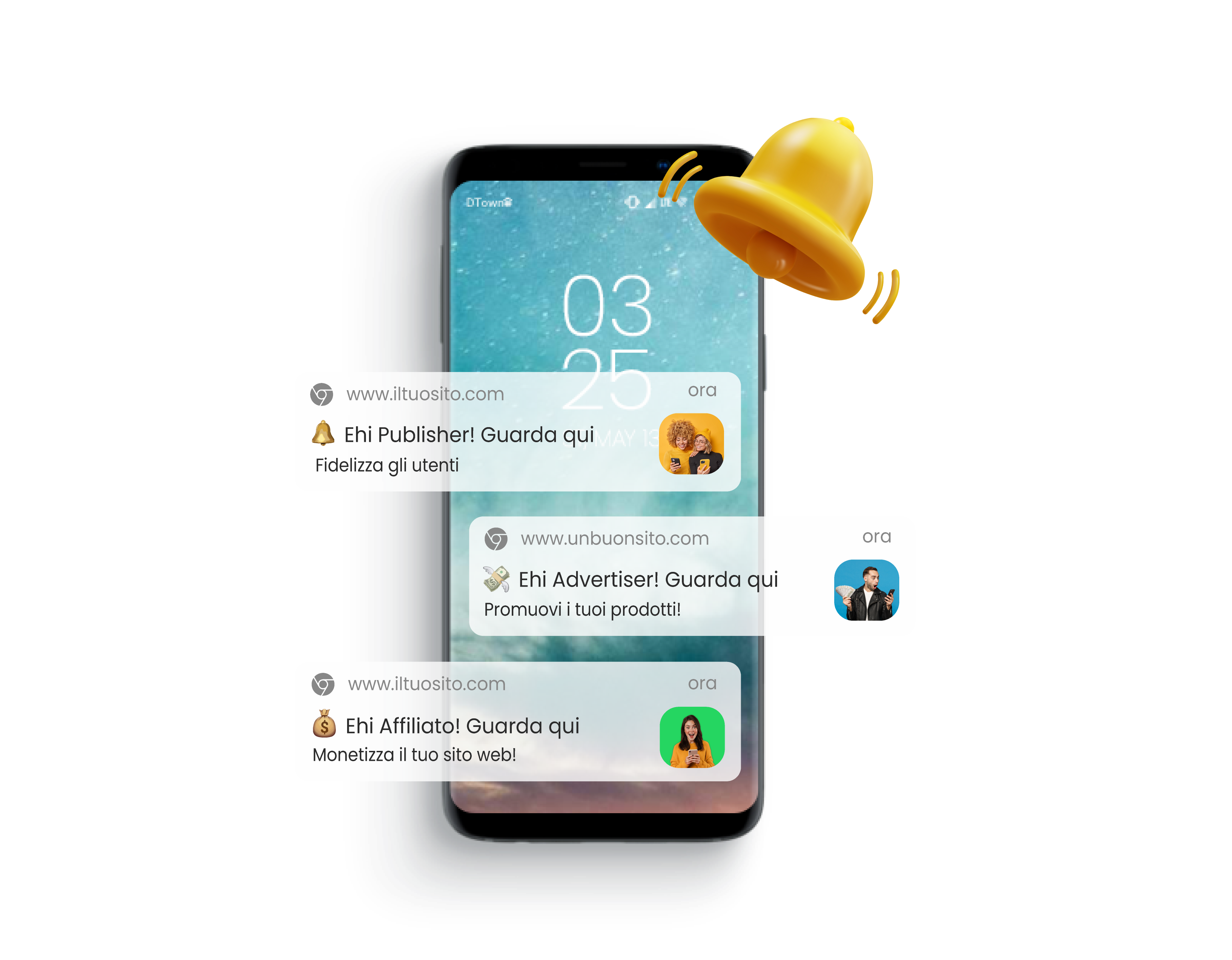
Web Push Notification technology is an effective means to send instant messages to users directly through their browsers, without the need for an installed application or providing email addresses or phone numbers. This system allows websites to reach users quickly and directly, providing relevant information, updates, promotions, and more. However, since it involves the collection and processing of personal data, it is crucial to ensure compliance with the General Data Protection Regulation (RGPD) to protect users’ privacy.
How Web Push Notification technology works:
Subscription: To receive push notifications, users must give explicit consent. When they visit a compatible website, they are shown a prompt to allow or deny notifications. If the user agrees, the browser generates a unique endpoint for that user and sends it to the notification service server.
Endpoint: The browser-generated endpoint is a unique URL that serves as the delivery point for push notifications. This endpoint is then associated with the user’s ID and stored on the notification service server.
Sending notifications: When the website wants to send a push notification to a specific user, it sends a request to the notification service server containing the user’s ID and the message to be delivered.
Delivery: The notification service server then sends the notification to the user’s browser using the stored endpoint associated with that user. The browser receives the notification and, if the user has given consent, displays the push notification to the user.
Endpoint: The browser-generated endpoint is a unique URL that serves as the delivery point for push notifications. This endpoint is then associated with the user’s ID and stored on the notification service server.
Sending notifications: When the website wants to send a push notification to a specific user, it sends a request to the notification service server containing the user’s ID and the message to be delivered.
Delivery: The notification service server then sends the notification to the user’s browser using the stored endpoint associated with that user. The browser receives the notification and, if the user has given consent, displays the push notification to the user.
Why Web Push Notifications are RGPD compliant:
Explicit consent: The main requirement of GDPR is explicit user consent for the collection and processing of their personal data. Web Push Notifications meet this requirement by requiring clear and unambiguous consent. Users must give specific and informed consent before they can receive push notifications. The subscription process includes a prompt that clearly explains the use of notifications and asks for the user’s explicit consent.
Right to revoke consent: According to GDPR, users have the right to revoke their consent at any time. Web Push Notifications allow for easy revocation. Users can disable notifications directly through their browser settings or by using the opt-out mechanism provided by the website. When a user revokes consent, the notification service server deletes the endpoint associated with that user, ensuring they will not receive further push notifications.
Data minimization: RGPD’s data minimization principle requires that only the necessary data for the specific service is collected. Web Push Notifications adhere to this principle by collecting only the browser endpoint and user ID required to deliver notifications. No additional personal data is collected, reducing the risk of privacy breaches.
Transparency: RGPD requires that users be transparently informed about how their personal data is used. With Web Push Notifications, the website must provide clear privacy information and detailed explanations about push notifications. This allows users to make informed and conscious decisions about their participation.
Data security: RGPD places special emphasis on the security of personal data. Notification services must implement adequate security measures to protect user endpoints and data. This includes the use of cryptographic protocols for notification transmission and security measures to protect the notification service server from unauthorized access or data breaches.
Right to revoke consent: According to GDPR, users have the right to revoke their consent at any time. Web Push Notifications allow for easy revocation. Users can disable notifications directly through their browser settings or by using the opt-out mechanism provided by the website. When a user revokes consent, the notification service server deletes the endpoint associated with that user, ensuring they will not receive further push notifications.
Data minimization: RGPD’s data minimization principle requires that only the necessary data for the specific service is collected. Web Push Notifications adhere to this principle by collecting only the browser endpoint and user ID required to deliver notifications. No additional personal data is collected, reducing the risk of privacy breaches.
Transparency: RGPD requires that users be transparently informed about how their personal data is used. With Web Push Notifications, the website must provide clear privacy information and detailed explanations about push notifications. This allows users to make informed and conscious decisions about their participation.
Data security: RGPD places special emphasis on the security of personal data. Notification services must implement adequate security measures to protect user endpoints and data. This includes the use of cryptographic protocols for notification transmission and security measures to protect the notification service server from unauthorized access or data breaches.
In conclusion, Web Push Notifications can be fully compliant with RGPD as long as they are implemented with care and follow the fundamental principles of the regulation concerning consent, transparency, data minimization, and security. By meeting these requirements, this technology can offer websites a powerful and ethical way to engage users and provide relevant information without compromising their privacy.

